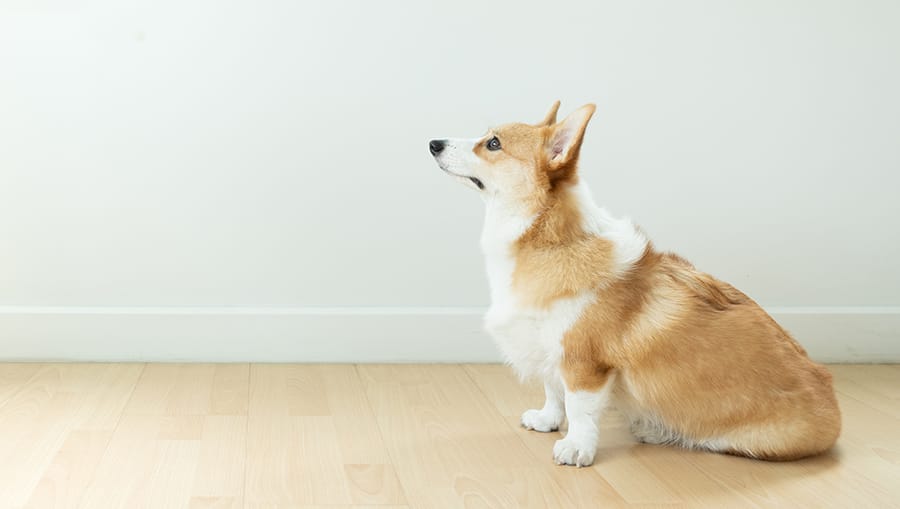How to Teach a Dog to Sit – 5 Easy Steps
Published: Last updated: by Jessi Larson Affiliate Disclosure: We hope you love the products we've recommended! As an Amazon Associate we earn a small share from qualifying purchases.As a new dog owner, you and your pup have lots of firsts ahead of you, and when it comes to your dog’s first trick, it usually starts with the “sit” command. With this guide, we’ll show you how to teach a dog to sit in no time!

How to Teach a Dog to Sit: Getting Started
Sitting is a basic building block for subsequent advanced commands and helps keep your pup calm and focused when necessary. To teach your dog this skill, just follow these simple steps, and remember to stay patient and compassionate to your dog – especially in the puppy stage.
1. Present a Treat
Start with showing your dog a treat and bringing it just above its nose. Make sure you’re not holding the treat too high above your dog’s head, or it will be tempted to jump up and get it.
Next, move the treat toward the back of your dog’s head, while keeping it close and not too high up. Your dog might react a few different ways at first, such as smelling your hand and turning up its head to the treat, but it should eventually get into a sitting position.
If that approach fails, wait for your dog to naturally sit down on its own, then offer plenty of praise and reward the behavior. Give lots of verbal cues such as “yes,” “good job,” or “you did it!” This should make your pup understand the performance you’re after.
2. Offer Immediate Praise and Reward
As soon as your dog comes to a full sitting position, present your reward and press the clicker if you’re training with one.
Be sure to offer plenty of verbal praise and support as well as some physical affection like tummy rubs.

3. Introduce a Verbal Cue
The next time you repeat this process, introduce the verbal command “sit” when showing your dog the treat.
Again, offer lots of praise and reward immediately with a treat and use the clicker. Repeat the word “sit” each time so that your dog learns to associate the verbal cue with the desired behavior.
4. Remove the Treat
After enough repetition, you shouldn’t need to move the treat to lure your dog into a sitting position.
Instead, the “stay” command should sufficiently signal what behavior you’re expecting your dog to perform.
5. Add Distractions
You should continue to practice the “sit” command for about 5-10 minutes per session across many different surroundings.
Although you started out in a private distraction-free environment, it’s time to take your pup out of their comfort zone to test the “sit” command in a more challenging setting.

Teaching Puppies
If you’re training a puppy, you might find that getting them to a sitting position isn’t as easy as it seems. That’s perfectly normal – puppies are full of energy and excitement and may need a little help understanding what’s being asked of them.
Just wait until your puppy sits down on its own, then offer lots of verbal cues like “yes,” “sit,” and “good job” and immediately reward the behavior with a treat.
Do this until your dog connects the dots between sitting and your verbal cue.

Final Thoughts on How to Teach a Dog to Sit
Figuring out how to train your dog to sit should be a fairly simple process that lays the foundation for many advanced tricks down the line.
More importantly, it keeps your dog calm and connected to you – their owner. Follow our steps and keep your training sessions on the short side between 5-10 minutes.
As is the case with teaching any command, avoid using negative reinforcement or punishment if your dog struggles to learn. Always end your sessions on a positive note and keep things upbeat.
With plenty of patience, repetition and practice, your dog will have mastered their very first trick!
Watch a Training Video
As you learn how to teach a dog to sit, sometimes it helps to see the process in action.
Lucky for us, dog trainer Zak George has put together a video on the topic. It’s another great resource on how to quickly teach your dog to sit.
We love George’s positive, fun and informational style, and he has a wide variety of videos on other training topics that are great to check out.



 Getting a New Dog?
Getting a New Dog?